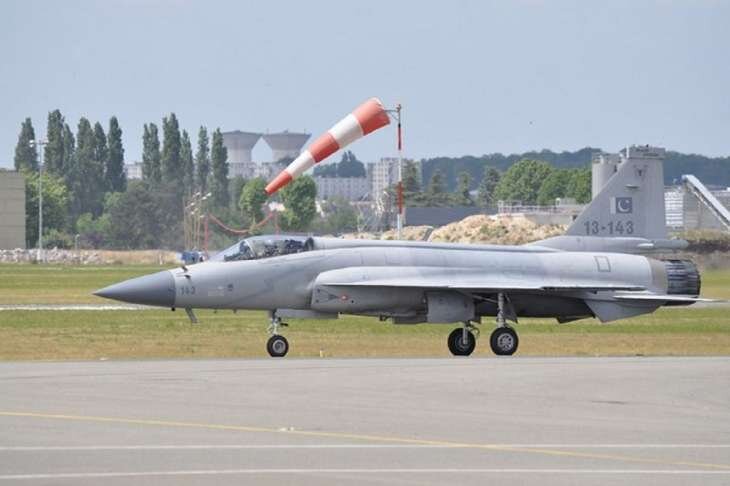The Pakistanis launched a counterattack with US F-16 fighters and Chinese JF-17 fighters south of Pir Panjal in Jammu and Kashmir on February 27, 2019, one day after the Indian Air Force (IAF) successfully attacked the Jaish-e-Mohammed (JeM) terror training camp at Balakot to avenge the Pulwama terror attack.
Documentary evidence shows that the JF-17 jets were not at all involved in the Pakistan Air Force’s use of F-16s to target unidentified targets in the Nowshera-Rajouri-Poonch sector across the LoC.
Indian aircraft intercepted the Pakistani attack, and Wing Commander Abhinandan Varthaman shot down an F-16 that was much superior before crashing his vintage MiG-21 Bison in Pakistan-occupied Kashmir (PoK). The much-heralded Sino-Pak produced JF-17 was only there for show, did not see the air action, and remained hidden behind the American fighters as the US F-16 fired air-to-air missiles at Indian fighters. Due to a shortage of replacement parts for the Klimov RD 93 aircraft engine, which is built in Russia, the JF-17 programme is currently in a rut.
Pakistan had bypassed China and directly contacted Russia to purchase the RD-93 engines after being hurt by numerous JF-17 aircraft failures, which were mostly caused by the RD-93 engines’ capacity to be repaired. The Russian engine manufacturer Kilmov has now expressed its willingness to provide RD-93 engines and its accompanying repair systems and maintenance facilities to JF-17 aircraft as a result of several conversations between Islamabad and Moscow.
However, M/s Rosoboronexport, which is permitted to export defence equipment, including RD-93 engines and parts, was sanctioned by the US in 2018, which had a negative impact on the PAF’s ability to source RD-93 engine spares. The two governments and the affected institutions are currently working to resolve the sanctions that prevent Rosoboronexport from conducting transactions in US dollars.
By allowing Pakistan to buy the RD-93 engine directly from it rather than through China as in the past, Russia has improved its defence ties with that country. However, with Russia coming under pressure from the West and seeking help from others, international relations are in flux and geopolitical equations are shifting quickly. In the changing geopolitical system that Pakistan is trying to take advantage of, it is clear that Russia is drawing closer to China.
Pakistan Air Force saddled with underperforming JF-17 aircraft
The JF-17 fighter jets were jointly built by Pakistan and China and were intended to be a low-cost, lightweight, all-weather, multi-role fighter with a Chinese airframe. However, the JF-17 has fallen short of expectations and is now a liability for Islamabad. Beyond seriously raising doubts about the quality of these aircraft, Islamabad’s experience with the JF-17 aircraft, notably its Russian-made RD-93 engines, tells a completely different picture.
The Pakistani military leadership had anticipated a fighter aircraft similar to the French Mirage 2000 or the Russian Su-30 MKI, however the JF-17 aircraft fell far short of their lofty expectations due to the aircraft’s poor performance versus the Mirage 2000 and Su-30s of the Indian Air Force.
Interestingly, the JF-17 has experienced a number of crashes since joining the Pakistan Air Force (PAF) in 2009, raising serious concerns about the aircraft’s suitability. To the PAF’s dismay, the JF-17 is not even close to living up to the boastful claims made by China due to issues with the performance of the Russian-made RD-93 engines that were installed in the aircraft.
Compounding the issue, the PAF has been having trouble maintaining the aircraft due to a lack of engines and spare parts. Due to contractual requirements that force Pakistan to only purchase RD-93 engines from Russia through China, a significant number of Russian RD 93 engines installed in the JF-17 aircraft have developed cracks in guide vanes, exhaust nozzles, and flame stabilisers.
The PAF has been working hard to replace these engines. More than half of the total number of these aircraft (137) owned by the PAF were grounded as a result of the China National Aero Technology Export & Import Corporation’s (CATIC) slow response in providing the essential spare parts and support for the RD-93 engines of the PAF’s JF-17 aircraft.
